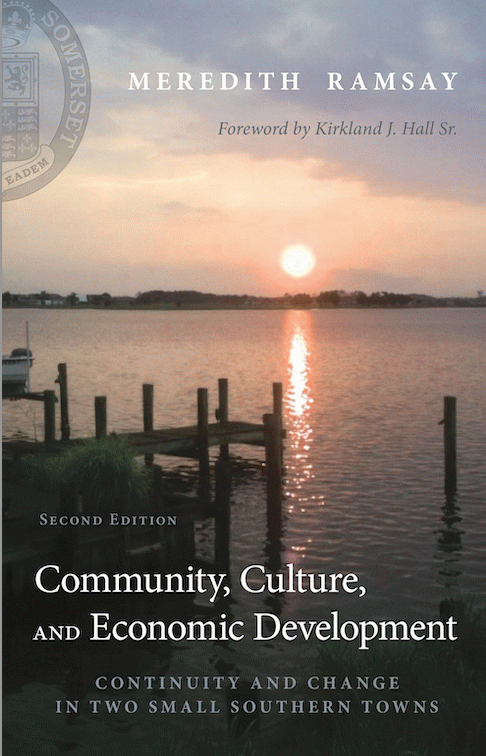Scholarly studies are, of necessity, rigorous, but that doesn't mean they have to be tedious. According to numerous reviews, Meredith Ramsay's study of two small towns on the Eastern Shore of Chesapeake Bay passes academic hurdles with flying colors; but for this non-academic, the book reads like a novel, with a warm humanity shining from every page. The documented facts are all there, of course, but the book reads like a live human drama.
My reading may have been colored by my long-ago experience working on the deck of a Skipjack, from which tiny clusters of oyster shacks could still be seen clinging to the subsiding wetlands of Maryland's Eastern Shore. The view is of intimacy and danger; of horrible decomposition and soul-restoring beauty. Even to an outsider, this same ambiance emerges when Ramsay peels back the veneer of modern life like the carapace of a crab to reveal ancient social patterns so resistant to change as to seem eternal.
As our view scales down to ground level, a few individuals stand out, a small sample that reflects accurately the uneasy marriage of unorganized rural labor and highly structured industry in a globalizing world, managed ruthlessly through courthouse-gang politics. Some genuine heroes and sheroes buck up one's faith in humanity even as some scalawags and scalawagesses always seem to win in the end. This is a microcosm of American history, just under the surface of our multifarious culture, where crime and love go hand in hand.
As Ramsay makes clear, the conventional wisdom that purports to explain generations of poverty in the midst of plenty just doesn't add up. As the plenty erodes or subsides, underlying social stresses emerge like the timbers of ships from a bygone era. Here Ramsay shines a light exposing the ecology of property, wealth, and race; and the ways in which individuals have held things together for survival under oppressive systems left by the rusting, centuries-old machinery of human trafficking.
It seems to hold true, for the most part, that the more things change, the more they stay the same. But generation after generation springs up in this fertile compost, and it is the people who transform themselves as they chafe and struggle under a system we can barely see but for that friction. Particularly in the Preface to the Second Edition and the chapter-length Epilogue, Ramsay introduces us to ordinary people of inspiring perseverance and decency. They do not win much, and they don't get many breaks, but their integrity remains untarnished. One of the nuggets of wisdom I draw from this saga is that the human spirit seems to progress through endless loss; and there are always a few humble giants among us.
The first edition was published by SUNY Press in 1996, under the title, Community, Culture, and Economic Development: The Social Roots of Local Action. By using the historical method, Ramsay was able to explain why the impoverished small towns of Crisfield and Princess Anne diverged so markedly in their policy preferences regarding economic development, thus providing a sharp critique of neoliberal economics.
This review refers to Ramsay's updated and expanded second edition, published by SUNY Press in 2013, with a new focus on the ongoing struggle of Black Americans during the seventeen years since the first edition was published.
Meredith Ramsay with Foreword by Kirkland J. Hall Sr. Community, Culture, and Economic Development, Second Edition: Continuity and Change in Two Small Southern Towns . State University of New York Press, Albany (2013)






